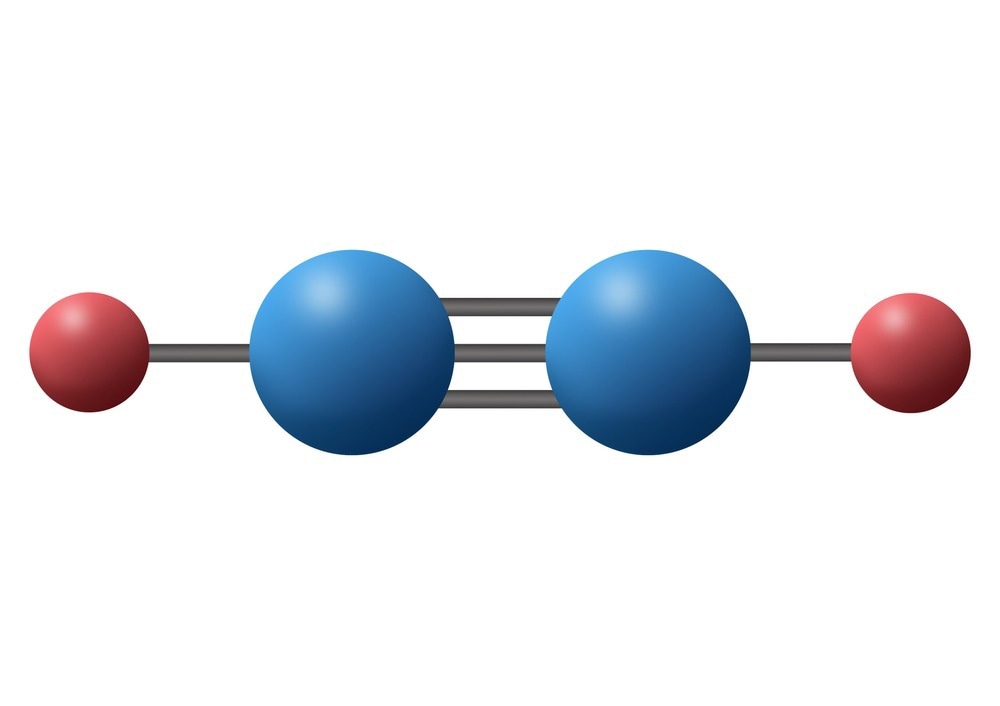In a paper recently published in the journal ACS Applied Energy Materials, researchers presented a solar energy-driven sustainable technique for olefin semi-hydrogenation and hydrogenation of alkynes.

Study: Photocatalytic Approaches for Sustainable Olefin Transfer Hydrogenation and Semihydrogenation of Alkynes Using Natural Sunlight. Image Credit: Lookiepixie/Shutterstock.com
Background
Hydrogenation is one of the most fundamental chemical reactions which uses a metal catalyst from the platinum group and hydrogen (H2) gas, with applications ranging from research facilities to industrial operations for the synthesis of fine and commercial chemicals.
Unsustainable or high-energy processes are used to produce gaseous H2. As a result, developing novel, sustainable hydrogenation methods are essential. Sustainable photocatalytic methods powered by solar light may be advantageous in overcoming these limitations in both transfer hydrogenation and H2 generation.
About the Study
In this paper, the team demonstrated the implementation of a photocatalyst based on a semiconductor for olefin hydrogenation processes activated by light. In the absence of gaseous H2, the strongly reactive system used photoactivation to exhibit the capacity for efficiently accelerating olefin hydrogenation, obtaining high yields within one hour.
A BiVO4/BiOBr/Pd photocatalyst was fabricated according to standard procedures. The hydrogenation process included the suspension of the BiVO4/BiOBr/Pd sample weighing 20 mg in a 100 μM olefin solution using a 3:1 ethanol/H2O solvent. The setup was illuminated by a 450 W medium-pressure mercury lamp. Palladium (Pd) is an important reaction component, promoting the formation and activation of the H atom for hydrogenation. In order to verify this role, five distinct BiVO4/BiOBr/Pd systems were made, each with a different amount of Pd contained in the sample.
Furthermore, during the linear reaction phase, the turnover frequency (TOF) for the formation of the product was estimated for each photocatalyst. Finally, photocatalytic hydrogenation using Pd-free BiVO4/BiOBr was carried out as a control. To investigate the influence of substrate variation on photocatalytic hydrogenation, the reaction was driven using BiVO4/BiOBr/Pd with 8% Pd. Finally, 1-phenyl-1-cyclohexene photocatalytic hydrogenation was further analyzed. For the alkynes 1-dodecyne and phenylacetylene, a further photocatalytic hydrogenation study utilizing BiVO4/BiOBr/Pd was performed.
Observations
BiVO4/BiOBr/Pd may oxidatively cause dehydrogenation of ethanol to acetaldehyde when excited by light. While the BiVO4/BiOBr/Pd components consisting of an 8 wt% Pd loading produced considerable product yields, variations in the Pd amount in the system had a direct effect on the reactivity of photocatalysis. The reaction’s isomerization volume rose as the Pd amount in the materials was reduced. This resulted in reduced product yields which trapped the substrate in the form of an isomer instead of obtaining a wholly hydrogenated product.
Notably, greater TOF values were observed for reactions with increased isomerization. This is most likely due to the rapid formation of products over reduced reaction times. The photocatalytic hydrogenation of phenylacetylene was seen to be rather quick. Roughly two-thirds of the phenylacetylene had been changed to styrene as the sole detectable product after three minutes of light exposure. Complete consumption of phenyl acetylene was observed after five minutes of total exposure.
After 240 minutes of irradiation, hydrogenation of 1-dodecyne to 1-dodecene (the intermediate) yielded 76% product output. The 1-dodecene intermediate showed limited isomerization. Remarkably, the hydrogenation of the alkene intermediate could lead to the formation of 1-dodecane. However, only after 240 minutes of irradiation was hydrogenated n-alkane completely detected. Such reactivity implied that the BiVO4/BiOBr/Pd photocatalyst can produce semi-hydrogenated alkene intermediates from alkynes. This level of alkyne reactivity presumably originated from the preferred slower desorption or adsorption of alkynes over alkenes from the surface of the material.
Such variations in desorption/adsorption speeds helped explain why the alkene intermediate underwent limited hydrogenation until the complete consumption of the alkyne. This was accomplished despite the fact that the alkene hydrogenation rate in the absence of alkyne was much higher than the rate of semi-hydrogenation of the alkyne.
After demonstrating that BiVO4/BiOBr/Pd is an efficient photocatalyst for transfer hydrogenation in artificial lighting conditions, an alternate source of irradiation, sunlight, was investigated for driving the process. Solar illumination was used to achieve ethylbenzene from photo hydrogenation of styrene in eight minutes. Therefore, the artificial lighting system conditions delivered greater energy content, resulting in higher TOFs. Nevertheless, solar illumination was also considered to be highly appealing since it is both carbon-neutral and energy-efficient.
Conclusions
To summarize, the researchers established that BiVO4/BiOBr/Pd marks a significant step forward in sustainable photo hydrogenation. Moreover, it allows a sustainable approach to hydrogenation by employing a renewable hydrogen source from ethanol via photocatalysis driven by solar radiation. It was confirmed to be successful in olefin hydrogenation, as well as more complex inactivated species, and attained alkyne semi-hydrogenation. According to the authors, reaction and material optimization, which could be the focus of future research, might result in increased reactivity. This system serves as a foundation for shifting essential catalytic mechanisms toward more sustainable alternatives.
More from AZoM: What are Biopolymer-Based Hydrogel Electrolytes?
Disclaimer: The views expressed here are those of the author expressed in their private capacity and do not necessarily represent the views of AZoM.com Limited T/A AZoNetwork the owner and operator of this website. This disclaimer forms part of the Terms and conditions of use of this website.
Source:
Miller, Edward B., Knecht, Marc R., Bachas, Leonidas G., Photocatalytic Approaches for Sustainable Olefin Transfer Hydrogenation and Semihydrogenation of Alkynes Using Natural Sunlight, ACS Applied Energy Materials, 2022, DOI: https://doi.org/10.1021/acsaem.2c01643.